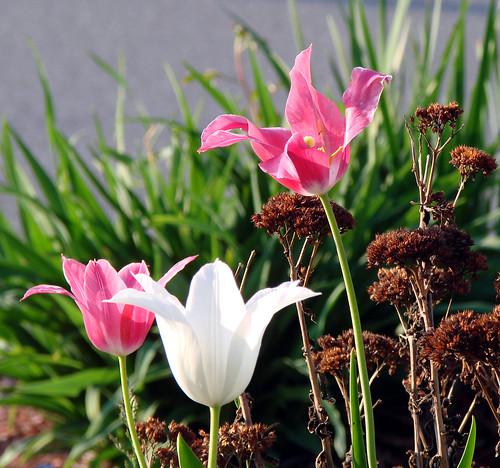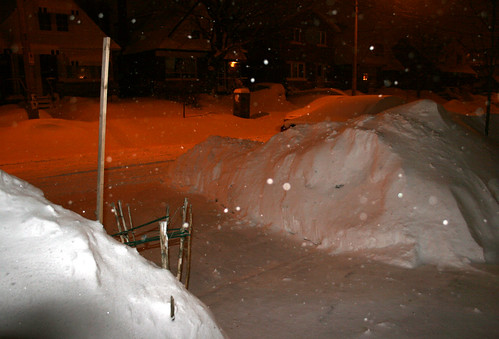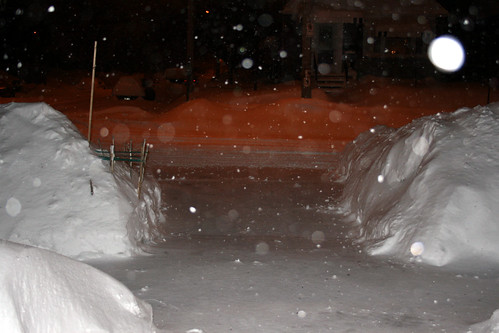It’s been a long winter
Many of us in the North experienced one of the snowiest winters that we’ve had in years. Cool temperatures are continuing even though it’s already officially spring. I’d say that this year we’re probably going to be two or three weeks behind on our normal Spring gardening tasks.
Normally the snow is gone, or just about gone, by this time in March. In fact I usually have crocus’ and snowdrops blooming by now. However, if you experienced the same winter I did your garden is likely still buried under snow!
Still … it’s time to think about Spring gardening tasks.
I’m sure some of you have already started cleaning up your garden and preparing for the season ahead. Those of us that are still unable to get out into the garden, well … we can at least make sure that our gardening tools are in order, oil and sharpen our pruners and purchase any supplies that we need so that we’ll be able to catch up once the snow finally melts!
Spring Tasks
- As I stated above, this is a great time of year to maintain your gardening tools by cleaning, sharpening and oil pruners, having your lawnmower blades sharpened, buying new gardening gloves and any other items that you might need throughout the coming months.
- Once the grass is no longer wet and the soil in your garden beds dries out begin your outdoor tasks by raking the lawn to get rid of leaves, twigs and other debris that has accumulated in your yard thanks to winter winds.
- Rake the dead growth from your lawn.
- If you have damaged or bare patches on your lawn purchase some grass seed and re-seed those areas. Be sure to scratch the soil with a rake first and then apply grass seed to the area. Lightly cover the seed with a thin layer of soil and be sure to keep the area well watered until the seeds germinate and new grass begins to appear.
- If you protected your shrubs, trees or any garden plants over winter it’s time to remove the winter protect. As the air warms it’s very important that your shrubs and trees have good air circulation around them. Leaving burlap or other forms of winter protect on too long can lead to bark rot.
- This is also a great time of year to plant new trees, shrub, roses and other hardy dormant plants. Also if you have any trees or shrubs that you’d like to transplant elsewhere in your yard do it before they begin to leaf out.
- Many trees and shrubs benefit from a spray of dormant oil as this helps to control scale insects and other overwintering pests. Euonymus, magnolias, crabapples and other fruit trees should be sprayed when their buds are in swell.
- Take a good look at your garden beds and if you notice that any of your plants have come up out of the earth to the freeze and thaw cycles at this time of year. Replant any heave-ho victims as soon as possible. Most will recover nicely if you find them and replant while it’s still cool.
- Wait until temperatures are reliably warm before you begin to remove mulch and cut back plants such as roses, evergreen plants and shrubs. You can cut off obviously dead branches but don’t cut into live branches until there’s no chance of frost or a return of cold weather. If you aren’t sure what to cut then just wait until it’s a little warmer and your plant is showing obvious signs of growth. Once you do feel it’s time to prune it’s best to prune plants such as roses before they leaf out.
- Clear your garden of the previous seasons dead plant material such as dead leaves and other debris as they can harbor molds and overwintering pests.
- Ornamental grasses can be cut back at this time as well.
- Don’t overwork your garden beds by digging too early. The soil structure is delicate and if you dig in it while it’s still wet you can damage it’s composition. Soil should fall apart when you pick up a handful. If it sticks together in a clump wait until it dries out a bit more.
- Once the soil has dried out you can begin to dig garden beds, add manure, compost and prepare for the planting of new perennials, annuals and vegetables.
- Weeds will likely be some of the first green growth you see in your garden. Pluck them out now while they are still young and their roots are shallow. It will mean less work for you later on!
- Don’t forget to care for your houseplants. The winter months can be hard on house plants as the air is often dry inside the house due to forced air heating. The light levels have also been lower too. Perhaps take a few moments to pick off any dead leaves, top up their soil and lightly fertilize your houseplants so they too will have a great spring start.
Happy Gardening!




